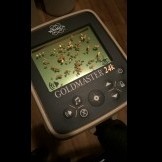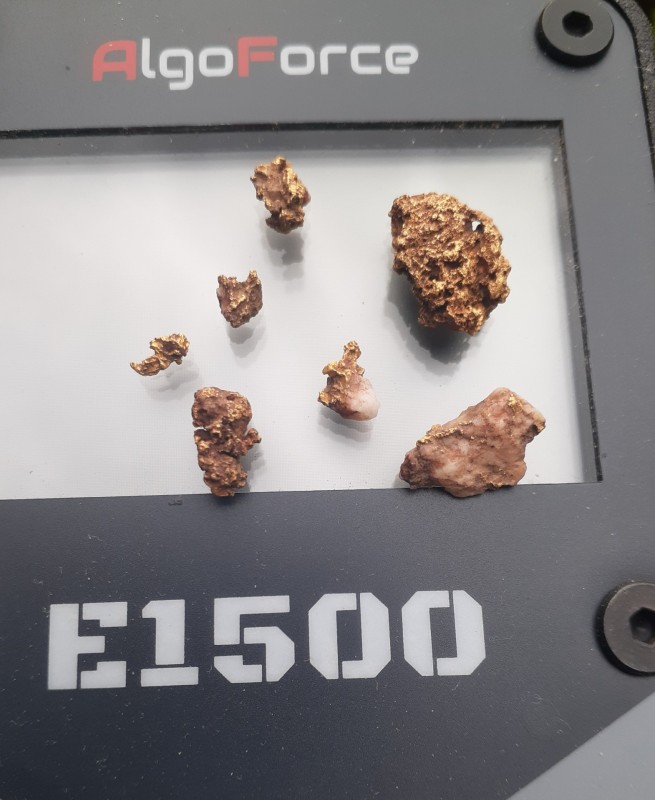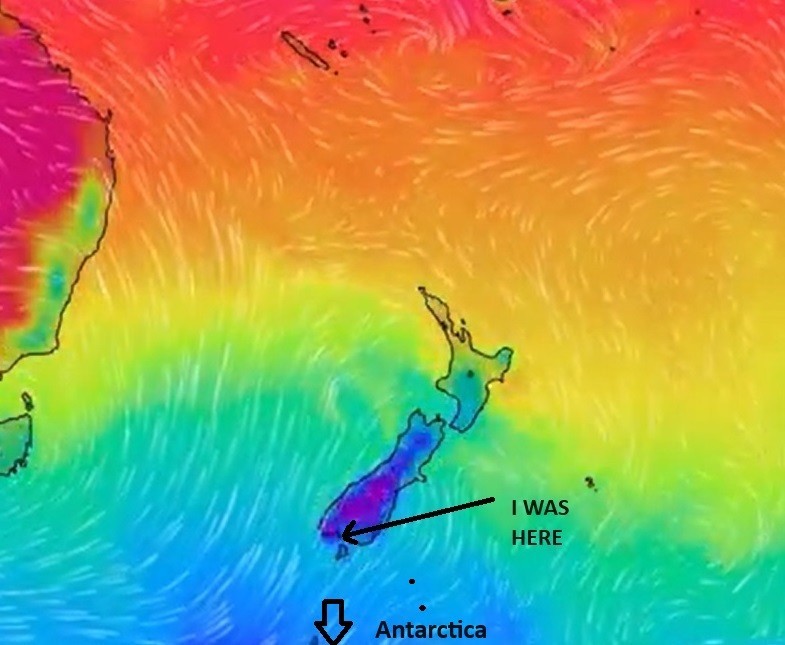Search the Community
Showing results for tags 'algoforce'.
-
Algoforce is an ever-evolving detector, the Algoforce team are constantly improving it and the latest firmware is no exception. This one is something those of us that have mild soil parks and fields are really going to appreciate, along with those that intend to use the unit as a beach detector, it has a new ZeroGB mode that adds significant depth in milder soils, and a new beach mode that uses the same ZeroGB method to enhance beach detecting depth while ignoring the salt even with the coil submerged in salt water. I really like this new update; it benefits me a lot with my coin and jewellery detecting. The detector has evolved from a gold only machine to a very capable coin and jewellery detector for parks and beaches, and by having Target ID it makes that even better than you would think with a PI. I did a really basic video when I first tried it out by using my Algoforce on 16 sensitivity seeing I was in my front yard which has a lot of EMI, the maximum sensitivity is 30, the coin is a New Zealand $1 coin, and the buried depth is approximately 20 to 25 cm, 8 to 10 inches and I'm only using a little 10x6" bundle wound mono X-coil. I really have no idea how deep the coin is now as it's been there for years but it was initially buried about 20cm so I'm estimating 25 as with the soils here coins sink and sink deep. The Length of a pinpointer is about the average depth I find coins, some deeper especially the UK copper penny's which are quite large coins and tend to sink deeper. The depth of the coin doesn't overly matter for the video as the video demonstrates the difference when you're in mild soils and can switch into the new Mild soil ZeroGB mode. You'll note the pinpoint mode also benefits from the extra depth in mild soil mode, prior to switching to that mode I was unable to get a pinpoint target ID, after switching to ZeroGB the Target ID kicks in. Here's the quick video I did just after installing the firmware to try it out and see the depth increase myself. The detectors also had a hardware change to a new version 2 of the basic package with a new shaft and arm cuff with comfort cover and stand with a new battery holding method that improves upon the original release, I didn't personally find anything wrong with the original shaft package but the improved one seems great with enhancements over the original, I did point out the USA customers are going to get a very well refined unit by the time it reaches the USA market, as it's evolving quickly. You can see more on their website at www.algoforce.com.au Here is the information off their website Our team has been continuously working on improving the AlgoForce E1500. We have been developing new software with enhanced features to unlock its potential, and simultaneously designing a new shaft to further enhance its overall convenience and usability. We are excited to announce that the AlgoForce E1500 Basic Package has evolved from version 1 to version 2. Equipped with the new shaft, the E1500 Basic Package version 2 includes several improvements: a fixed coil yoke, a stable middle shaft, a protected USB cable with a right-angle connector, lighter weight, increased full extension length, and the same compact length as version 1. These enhancements boost both convenience and performance. For further details about the differences between version 1 and version 2, please refer to the product page and page 7 of the user manual. Additionally, we are releasing version 1.1.1 of our AlgoForce E1500 software. This update introduces the highly anticipated Soil Type Setting, allowing users to select between Mineralised, Mild, and Beach options to optimise detector performance in various environments. Other enhancements include increased backlight brightness, an optimised pinpoint user interface, and adjusted target ID mapping for greater consistency. What's New in V1.1.1? 1. Introduction of Soil Type Setting 1.1 What is the Soil Type Setting? The Soil Type Setting allows users to select the appropriate soil type for their detecting environment, optimising the detector's performance. The available soil types are Mineralised, Mild, and Beach. 1.2 Soil Type Options: Mineralised: This option maintains the performance of previous software versions, suitable for mineralised soils. Mild: This option utilises AlgoForce's ZeroGB technology, which disables ground balance to enhance sensitivity for nuggets, coins, and treasures of all sizes in extremely mild gold fields, parks, and fields. Users do not need to perform ground balance when using the Mild option. If the soil mineralisation indicator reads 00 or 01 when you pump the coil up and down, you can try the Mild option. However, if selecting the Mild option reduces sensitivity by 4 or more compared to the Mineralised soil type with proper ground balance, it is not suitable for the soil. In that case, please select the Mineralised soil type. Beach: This option also uses AlgoForce's ZeroGB technology, yet aggressively rejects seawater signals and provides smooth operation on dry sand, wet sand, and even with the coil submerged in seawater. This option offers high sensitivity to coins and treasures commonly found on beaches without the need for the user to perform ground balance. 2. Additional Updates in V1.1.1 2.1 Increased Backlight Brightness: Enhanced visibility with a brighter backlight. 2.2 Optimised Pinpoint User Interface: The target ID is now displayed in a larger font for better clarity and positioned separately from the mineralisation ID to avoid confusion. 2.3 Adjusted Target ID Mapping: Improved consistency of target IDs across different detection modes, regardless of which soil type is selected. Please follow the Software Upgrade Instructions on page 16 of the user manual to upgrade the software. You can also watch Simon's demonstration on YouTube. IMPORTANT: After the software upgrade, it is crucial to perform a factory reset.
-
We have a new player on the field in the form of AlgoForce and their new E1500 detector. One thing that is not getting as much attention as I would expect from a PI - full range target conductivity id. From the owners manual: "For experienced PI users accustomed to estimating nugget size from audio cues, the AlgoForce E1500 can also help to estimate size or conductivity through its stable conductive target ID (0-99), even in highly mineralized soils. High single frequency VLF detectors typically struggle with signals on wet ocean sand, where PI detectors are far more capable of detecting through the salt mineralization. Capitalizing on its UltraFine pulse induction technology and stable conductive target ID (0-99), the AlgoForce E1500 excels on the beach, proving to be a versatile tool for searching fine jewelry, coins, rings, and other treasures." (Emphasis added) The discrimination feature kicks in when using the pinpoint mode. Again, from the manual: VIII. Pinpoint detected target (if needed) Enter the Pinpoint UI by pressing the Left/Pinpoint button in the Main Detection UI. In the Pinpoint UI, adjust Sensitivity with the Minus or Plus button. To retune the detection threshold due to ground variation or temperature drift, press the Left/Pinpoint button as needed. Perform Auto GB if needed by holding the Right/Auto GB button. Return to the Main Detection UI by pressing the Return/Auto FS button. Pinpoint is a non-motion mode where the coil doesn't have to move to indicate a target. The detection signal gets stronger as the coil approaches the target, causing the audio (if audio output is on) or vibration (if vibration mode is on) to intensify. The Conductive Target ID (0-99) displayed in the Pinpoint UI remains stable even in highly mineralized soils. A higher number indicates a larger or more conductive target. To obtain an accurate target ID, it is recommended to follow these steps: Move the coil away from but close to the target. Ensure the coil is resting on the ground surface and press the Left/Pinpoint button to retune. After that, slide the coil on the ground surface until the target is positioned just below the center of the coil. The target ID is also useful for assessing the target's shape. If the target ID fluctuates significantly when the coil is moved slightly off but still above the target, it likely indicates an irregularly shaped target, such as a bottle cap or a nail with a large head. Target conductivity is not the same as VLF discrimination in that both ferrous and non-ferrous are conductive. Stuff that is small or low conductive reads low numbers and stuff that is large or high conductive reads high numbers. Ferrous can read anywhere depending on various factors, so the usefulness of the system largely depends on the nature and mix of targets you are working with. Nowhere does the AlgoForce manual refer to ferrous versus non-ferrous discrimination. It specifically refers to the Conductive Target ID - in other words, a measurement of how conductive the target is whether ferrous or non-ferrous. Most GBPI users have savvied to the fact that the high and low tones give a rough indication of target size. A hi or hi-lo tone usually means small or low conductive targets and a low or lo-hi tone usually means large or high conductive targets. You get ferrous either way, just small ferrous on one side and large ferrous on the other. However, in certain gold locations concentrating on hi or hi-lo tones only can be remarkably effective at cherry picking gold nuggets out of a nail pit. Most gold I find almost always gives a hi-lo tone. Minelab employs a method where targets blank if ferrous, and Garrett the target grunts if ferrous. The Garrett method is preset, the Minelab method can employ a variable control depending on the model. What makes the AlgoForce different is instead of the "this or that", "yes or no" answer of two categories you get a full range indication, which with experience should lead to more nuance in what can be dug and what can be ignored. How is Algoforce doing this? Imagine is instead of an unmarked variable control like Minelab offers, the control had numbers on it, from 1-100. By turning up the control you could determine at what number various items are detected or ignored. All Algoforce is doing is revealing this hidden number to you. There is no new method being employed here and if there was, you would see a patent filed for it. My best guess is Algoforce is just refining existing PI discrimination by using digital processing to refine existing methods. There is however another possibility. I will refer you to a statement by famed metal detector engineer Dave Johnson. It is part of history now only available on the Wayback machine but has been in my mind for a long time: DS: Are TID pulse units the hobby future? Or, what do you think will be the next great advancement in metal detector technology? Dave: "About 1985 I built a real sweetheart of a discriminating PI unit, not very hot in air test, but it was simple, lightweight, powered by one 9 volt “transistor battery”, ran quiet in bad ground, had no bad habits, and you didn’t have to dig any trash. It morphed into a fully static TID machine which Fisher came close to releasing about 1989, but its reliance on fully static operation which was supposed to be an advantage, was in fact a fatal flaw for a TID machine. Stripped back down, it became the Impulse which was strictly all-metals. I always wondered why Fisher did not see the obvious, that a non-motion PI discrimination methos could be used as a pinpoint mode, where non-motion is the norm. That is exactly what is going on here with Algoforce and is a defining difference between what Minelab and Garrett are doing. Their methods require the coil is in motion. The Algoforce method requires the coil stop moving, just like Dave described many years ago. Has Algoforce rediscovered and employed the same method Dave discovered? Regardless of the method employed the main difference between PI and VLF discrimination remains. The key difference between PI discrimination and VLF discrimination is it is based on signal decay instead of phase angle. This means for ferrous small items read low numbers and large ferrous items read large numbers. So imagine a normal VLF target id scale with ferrous overlaid, small to large. With PI discrimination there is basically a ferrous target possibility for every non-ferrous possibility. There is no such thing as ferrous versus non-ferrous with a PI. The best you can do is cherry pick certain locations based on the overall target mix. In some locations with small ferrous only and coins you can pretty much dig the coins while avoiding the ferrous. If there are lots of large bent nails in the ground however they read high on the PI disc scale, and will be found in the same numeric region as coins. Conversely, if you are chasing small gold nuggets, you will find that small ferrous trash overlaps with small gold. In the most simplistic sense with PI discrimination small targets have small target ID numbers and large targets have large target ID numbers. Keep in mind that from a detectors perspective a low conductive target tends to being a small target, and a high conductive target is like a large target. Perhaps it is better to talk in terms of weak targets versus strong targets. Weak ferrous and non-ferrous targets deliver lower target id numbers while strong ferrous and non-ferrous targets deliver strong target id numbers. Again, I must emphasize PI discrimination is not the same as VLF discrimination. There are different aspects to it that require a savvy operator. There are a lot of half truths and incorrect statements tossed around by people who don't know much on the subject. One of the most common claims I hear is that PI disc only works at shallow depths, and that the things you have to do to implement it give up the extra depth that is the reason for using a PI in the first place. This is based on some versions of PI discrimination and so can be true, but also reflects that the person making such statements is not well versed in all aspects of the subject. You can indeed discriminate to full depth with a PI, and in fact that is the only way I have been doing it for over 20 years now. For more details on how pulse discrimination works see my long analysis at the thread below. No, it’s not VLF discrimination, but you’d be amazed what good PI operators can do with the capability they do have. Algoforce has certainly steeped up what is possible in that regard with an affordable hand-held metal detector. We have a winner in the Under 4 Pound, Under $2000 GBPI Challenge! AlgoForce E1500 Specifications and User Manuals Visit the new AlgoForce Metal Detector Forum
-
Zip-a-dee-doo-dah zip-a-dee-a. My oh my, what a wonderful day. https://youtu.be/zDePvXpYhzA?si=1hV5JYM9muHOwM8x What’s that mean you ask? Gerry is Happy….and most of you should be too. Finally, we have a quality PI detector at an affordable price point. Finally, we have a team of people working for AlgoForce that are listening to the consumer. Finally, we have a PI detector without $500, $1000, $1500 coils, we get to use 100+ different coil options many of us already own. Finally, we don’t have to pay $100, $150 and $200 for a spare battery. Finally, we don’t have to buy brand specific headphones that are overpriced and not even durable for metal detecting needs. Who wants to add some Zip-a-dee-doo-dah zip-a-dee-a? It’s going to be happy times for so many.
-
I'm having a day off skiing today so thought I'd take the Algoforce out for a quick test of the new firmware, I've never found something I consider a relic before, for a start New Zealand is such a young country, so relics are few and far between, and realistically not very old compared to relics in Europe, or even the US. I wasn't sure it was anything unusual at the time other than I found a bottle, that's weird for me 🙂 I only found it because I dug an old New Zealand pre decimal shilling, unfortunately not a silver one and while digging the hole a clump of soil came out, and once the clump came out the bottles tip was exposed, so out of interest I recovered it. I just thought I was removing some junk and put it in my pouch and resumed detecting. I took a photo of the shilling as I thought it was pretty cool I found a coin I'd missed previously, nothing special about the depth of the coin or anything, other than the bottle in the hole with it, probably missed it in the past due to sloppy ground coverage, I've no idea. It's a 1967, really hard to read the date, a shame it wasn't a little bit older as it would have been silver. Today has remained frozen all day so I wasn't really out doing a big detecting mission, I just wanted to try out the new Algoforce firmware on a spot I've hit pretty hard to see if any new targets might pop up seeing it has new feature by way of a mild soil mode with a big depth increase over its normal mineralized mode in my milder soils. So, I had a quick swing over some of the area, it was by no means a serious detecting mission, just a little test out of the running of the machine in this high EMI location. It worked very well, nice and stable in 19 sensitivity. I took off home not long after as it was starting to get dark and pretty cold. Once I got home I home I cleaned up the bottle by running it through the dishwasher then took a photo of it Not a bottle type I've ever seen before, and it's made pretty dodgy, the glass isn't like you would see on a modern bottle, even the base of the bottle is a bit uneven, it wasn't until I took a photo of some writing on it I saw something weird, it says Property of W Gregg & Co Ltd Dunedin The writing is hard to read, but you can see in this photo how uneven the glass bottom on the bottle is. I can't find the same bottle on Google but I've found other old bottles from the same business, it seems you never owned your bottles back then, must have had to return them to get them filled up again. I found some information about the business. GREGG, W. AND CO., LTD. , Coffee, Spice and Starch Manufacturers, General Merchants and Importers Lower Rattray Street, Dunedin. This business was founded in Princes Street by the late Mr. Gregg, in 1861, and was removed some years later to the premises it now occupies. In 1897 the business was merged into a limited liability company under the style of W. Gregg and Co., Limited; Mr. Gregg, the founder, acting as managing director until his death in May, 1901, when Mr. William B. M. Fea assumed the management. Amongst the many specialties for which the company is noted, are its high class coffees, pure pepper and spices starch, soda crystals, flavouring essences, etc., etc. W. Gregg and Co., Limited, were the first in New Zealand to manufacture wax vestas and starch. Gregg's “Eagle” starch has been for the last fifteen years the leading brand in the colony, whilst the firm's “Club” coffee, (its special brand household word throughout New Zealand. Messrs W. Gregg and Co. make it a standing rule that not one ounce of anything adulterated leaves any of their factories, and the most modern machinery obtainable is used in the manufacture of their various goods. They have been awarded a gold medal, a special gold medal, and over fifty medals and awards for the excellence of their manufactures at the following Exhibitions:—New Zealand, 1865; Christ-church, 1872; Sydney International, 1879; Melbourne International, 1880–81; Wellington Industrial. 1885; New Zealand and South Seas, 1889–90; Wellington Industrial, 1896–97; and Otago Jubilee, 1898. The company's chicory farm of fifty-six acres, and drying kiln are situated on Inchclutha. Its coffee and spice mills, and warehouse, are in Lower Rattray Street, and its starch, soda crystals, flavouring essences and kindred manufactures are carried on at its extensive works at Pelichet Bay, convenient to rail and wharf. I found this old poster saying it was packaged in Faney Canisters 😛 Not sure the age of the poster though, probably newer than the bottle. What I found interesting about that is they were coffee merchants, and oddly, instant coffee was invented just over an hour drive from where I found the bottle and the Dunedin factory this bottle was from is just a couple of hours drive so maybe it's something to do with coffee or had coffee in it? Today the brand still exists, but it's just called Greggs and they still sell instant coffee. Here is about the instant coffee invention The man who invented instant coffee The invention of instant coffee, dissolvable in hot water, was credited to a Japanese chemist working in Chicago in 1901. Turns out, it was a Kiwi - more 10 years earlier. David Strang, who owned a coffee and spice works factory in Invercargill, applied (and got) a patent for soluble coffee powder in 1889 under the name Strang’s Coffee. But until recently it was a barely known fact until the Historic Places Trust registered the house owned by one of his sons, James. Strang was born in Glasgow, Scotland in 1847, and one of his first jobs was in a coffee warehouse. He was only 16 when he boarded the Barwood to come to New Zealand in 1863, landing in Bluff. He worked in several trades until in 1872 he established a coffee factory in Esk Street, Invercargill. The business grew quickly, expanding into other foods including spices sold around New Zealand and Fiji. Strang’s products began winning awards around the country and in Australia. In 1889, he applied for the patent for soluble coffee, the first of its kind in the world and began selling it. With sharp marketing in mind, he sent samples to newspapers to get the word out. The Otago Daily Times reviewed the substance: "Strang's soluble coffee powder requires no boiling, but is made instantly with boiling water. Then, again, it can be made in a breakfast cup and requires neither the use of pots nor the employment of experienced cooks." He was also one of the first people to successfully claim a patent under New Zealand law. He said he used a ‘dry hot air’ process to make it, essentially blowing hot air over liquid coffee until it reduced to a solid. Strang also filed patents for a "coffee-roasting apparatus of novel design" and Strang's Eclipse Hot Air Grain Dryer. He was also credited with making mocha. He married Mary Jane Ramsey in 1877 and they had five sons and six daughters. Strang died aged 69 on July 19, 1916 and is buried in Eastern Cemetery in Invercargill with his wife Some years ago, I found an old bottle in my vegetable garden, I think it was thrown out, now I'm very interested to find out what it was, my wife can't even remember me finding it and I'd say she's guilty of throwing it out 🙂
-
I just went out to one of my local parks and checked the sand only. It is not a park I dig the grass unless there has been some rain on it. That means I'll only find recent drops. I've been on these same sands with the 800 several times and I think the Manticore so that would be two months ago. I'm sure others hunt this same area also. I've found one ring there in the past. I was a little bit surprised by the finds with the Algo/12" Evo. The new Mild setting worked well with reduced sensitivity to maybe 10 or so because this like some of the other parks I go to has equipment buried under it. One area gives my 800 fits. I have to listen through the noise. I went early so the number of kids there would be low but there was a guy who had a 3.5 year old, a 2 year old and a 6 month old! What a family. Mine are 6 and 3.5 so he really has his hands full. The things you see in the picture were found in about an hour. (I gave a couple of dimes to the older boys.) The compass is obviously a recent pocket drop. I was both glad and surprised to get the nails and wire out of the sand because most kids are barefoot when playing in this area. There was also a volleyball court. I think the nails were still there because they were mostly in the area with high EMI. I didn't spend enough time on the IDs of the targets. It was finding them to a depth of 8 inches or so but I don't want to dig much deeper than that anyway.
-
Nenad now has the Algoforce DD leather cover set available, in green and grey. It looks really good. I will probably have to order one of these in the near future, arm cuff, battery and cover pod covers set. $95 AUD.
-
Finally managed to score the 1st nugget with the Algo 1500. No, it's not the traditional "wow nugget" hanging off Gerry's chin, those big rare finds are actually easy to hear, provided you get the coil over them. This 1st Algo gold was a little flat picker nugget found at a high elevation hand workings site on the side of a steep mountain in Eastern Oregon. Even though it's only 1/10th of a gram (spot on), it's gold and the 1st while the Algo is in my hands. I’m hoping more will come with time? Back in the day, I was swinging this site in later 90's - early 2000's with VLF detectors. My recollection last time with a PI machine (Minelab GP-Extreme) was in 2003 while trying to score a few of those flat dense pieces of heavy metal gold. Then I changed desires and started focusing on bigger gold (like this monster my customer found only a few miles away at a different location) So abandoning the old sites with smaller nuggets and pickers, I did. Also, I realized I can always come back and get those bits with less value down the road. As the bigger gold is drying up I sometimes think of the small nugget sites with the new technology PI detectors. I've never used a GPZ-7000 or the newer GPX-6000 until this year when we had 6's on it recently. I'm not sure a 7000 would be a viable choice because of it's weight and the steepness of the mountain side. Maybe Doc's new Dalas system is a try next trip? The 2 GPX-6000’s were able to score gold as I had posted last week, so why not give the Algo a shot? After all, it’s sleek design and lighter weight will be a welcome to my arm in this steep terrain. Just maybe Algo and the smaller coil can get in between rocks/bushes/logs and sniff a nugget or 2. My detecting buddy was using a GPX-6000 that day. I noticed in the same area and we could get pretty close to each other, which is really nice for some of the mountain areas we swing. The workings can sometimes only have a small area to detect so being able to have 2 PI detectors powered ON at the same time and location is a big welcome. I estimate we were 25' with smooth operation. Maybe having 2 Algo detectors may even be closer, only time will tell. He had just recovered his 1st gold ever (on his own) without me being plugged in. It was a really nice flat 1.41 gram nugget and I was impressed with his skill. The nugget was a good 11 to 12" down and a very soft sound. He was not even sure it was a true signal until he'd removed 2", but the signal was just enough for him to catch "iffy needs scratchin". All the nuggets that have been recovered in this area are extremely flat and smooth, so their beauty is not glorious, but their gold. I was not able to hear this nugget with the Algo at surface depth but as soon as he removed about 4” soil, the Algo responded as expected. Part of this is due to the coil selection I had on the machine, a small Sadie 8x6” as he was running the stock 11” round. If the coil on the Algo was larger, I would probably had only 2” in depth difference on this particular nugget. The other aspect is the different detectors and their cost. Comparing Apples to Oranges on the side of a mountain on a couple pieces of gold at one location is in reality, not recommended and or fair. Not only 2 minutes later, my Algo is singing the soft PI wee-hoo of a small target. It’s in a slight divot and above my waist level. Sure could not swing a 7000 or older PI of weight in this position for any time. Notice, he's standing upright and his GPX-6000 is held at waist level with his arm almost 45 degrees. That's another reason I hate using the Manticore in areas like this, as the detector easily hears the lower CF shaft when moving coil around. Silly Minelab, what were they thinking? Anyways, the target recovered only an inch down and yes it was gold. I called my buddy over as he was only below me some 30 feet and he wanted compare his 6000. Here’s something we did not expect and he was a little confused as I? The 6000 did not respond very clean and when compared to the Algo (nugget laying there in the divot in eye site), the 6 struggled and the Algo sang praise. There again, probably the smaller coil on the Algo and all other gold capable detectors are designed to find smaller gold better than a larger coil. I’m not going to put any spins on my testing, since I know enough about detectors, coil sizes and different sizes/densities of gold can change the outcome. I do know this though for that location on that given day. Buddy with $6500 GPX-6000 found a deeper nugget that weighes more. Me using the sub $2000 AlgoForce 1500 with small coil also found a nugget but it weighed much less. I know this to be fact as well. There are more small nuggets still out there than big gold and having an option of a very simple to operate, light weight PI detector and better target identification system, all for under $2000 as an option is a very wise move for many. Below are some of the other nonferrous targets recovered that day with the flat yellow nugget in the middle. Hopefully I can get some time in the field again soon as we have a long weekend coming up (4th of July) and will report back. Until then, I really think the AlgoForce 1500 does in fact have it’s place for many, especially those 1st timers stepping up to a PI.
-
As some may know by now I have had an E1500 for some time. The main goal was to test for EMI issues with our power grid, which is not only different than the one in Australia but that also "leaks" a lot more than it should. The good news is that I am finding the E1500 to be in the upper tier of Pi detectors as far as stability and EMI resistance. It is perfectly useable here in urban scenarios where many other PI detectors would fail. I have been in contact with Alex offering some business based advice on how to get the detector into the U.S. market at the best price possible. A big part of that was focusing on reducing the size of the shipping box to allow for affordable master pack shipping to the states. It might mean ditching the included soft case but I am sure people will be fine with that if it means keeping the price as affordable as possible. Long story short all the steps needed to bring the AlgoForce to the U.S. have been looked at and are in progress. However, it is a matter of months away at the least, and since delays can happen for a multitude of reasons please do not set your watch according to this post or get grumpy if things do not go as fast as you imagine they should. They are going as fast as they can and that's the best Alex and company can do. The takeaway here should simply be that it is now confirmed as 100% being part of the plan as soon as it can happen. I want to close by saying that Alex is the biggest breath of fresh air I have experienced in the industry in a long time. He is incredibly responsive to feedback and suggestions, as shown by the several updates to occur already. The detector itself is a blast with several innovative design features never seen in a detector of this type before. Something as simple as the visual display of the current threshold level versus the live ground/target response is incredibly helpful in fine-tuning the detector. And those coils options!! The detector and the company itself are a true pleasure to work with, and I want to thank Alex for finally being the one to put my Under 4 Pound, Under $2000 GBPI Challenge to rest after seven years. I never thought it would take this long, but folks, we have a winner! My thoughts on AlgoForce E1500 vs The Rest I sent the detector to Andy Benson (abenson on the forum) to use for his impressions. His video below. The detector is now enroute to Gerry McMullen (Gerry in Idaho on the forum) for further testing and we should be hearing from him soon. I expect he will be getting it in the mail tomorrow.
-
Well looks like Simon beat me by a day, but I've got a video up showing the user interface in detail and cover most of the settings. AlgoForce E1500 Specifications & Settings
-
Open up a public API to the detector software and some hardware functionality so we can mod our machines or just experiment with the nuts and bolts. Even just a port to access the raw data directly would be interesting, as it could be recomputed, logged, whatever. It'd be a fun way to learn more about how everything works too - that's how some of us learned how to work on engines for example despite not understanding them entirely at first, and it's how I learn anything myself, just by getting my hands dirty with something real in front of me and not a book. It'd have the potential to create a modding community and make detectors a lot more fun and personal. And who knows, someone might actually figure out something new that the limited number of detector engineers hadn't thought of yet. It'd be something to keep me working with a detector even if I have no gold or coins to detect at the moment. I don't know that Algoforce would ever do this - but I guess they seem about the closest any manufacturer has come to a company that focuses on what it's customers want rather than what can maximize it's sales by forcing us to just buy an entirely new detector every time a marginal improvement is made. I'd buy a detector like this even if it wasn't something I needed, just so I could have something to experiment and play with.
-
The Algoforce manual suggests end users contact them with suggestions of improvements they could introduce, so I thought I'd test it out, see the caption below from the manual, "Bug Report and Feature Request AlgoForce highly values customer feedback as a crucial means of enhancing our products. To ensure a seamless feedback process, we encourage you to reach out to us directly via email at admin@algoforce.com.au. If you come across any bugs or have ideas for new features that could enhance your metal detecting experience, please send us an email with a detailed description of the issue or requested feature. Kindly include the hardware serial number and firmware version of your detector (located in the Miscellaneous setting) in your email. Our dedicated team of developers will promptly review your feedback and respond to you accordingly. We appreciate your contribution and look forward to working together to improve our products." I contacted Algoforce with a suggestion of an improvement on the 8th of February, The pinpoint volume I thought was unnecessarily loud, it's nice to have the general audio volume quite high when using the speaker or the Avantree Torus neck speaker which really made the pinpoint mode roar, in fact I have the volume maxed out most of the time, however the pinpoint volume in that instance was extremely loud, so I suggested an independent pinpoint volume control setting to adjust pinpoint's volume and leave the general volume the same. I am guessing headphone users would have found the pinpoint volume rather loud too. It is now the 13th of February and to my surprise this morning I woke up to an email from Algoforce with a new firmware update to try out, now incorporating independent volume for the pinpoint function. You can also now adjust the vibration separately from the audio volume, so you could have high pinpoint vibration with low pinpoint volume, or high pinpoint volume with low or no vibration, and the same goes in normal detector mode, no vibration with high volume, high vibration with low volume etc. To adjust vibration you just hold down the volume - or + buttons rather than pressing them. The new firmware release notes: Release Notes for AlgoForce E1500 Software v1.0.8: 1. The activation time for a long key press function has been reduced from 1.5 seconds to 0.7 seconds. For example, the time duration between pressing and holding the ground balance key and the commencement of actual ground balancing is now 0.7 seconds, as opposed to 1.5 seconds. Other functions requiring a long key press are similarly affected, including vibration adjustment and auto frequency scan. 2. In version 1.0.7, Pinpoint mode and the main detection mode shared the same volume and vibration controls. With the introduction of v1.0.8, Pinpoint mode now features independent volume and vibration controls separate from the main detection mode. Users can customize their preferred volume and vibration settings in either mode. Furthermore, the volume and vibration settings in both modes are saved during power down for convenience. I'm now testing this firmware out, I must say the upgrade process was simple and quick, I've recorded some video of the volume control function in use to see here, and soon they will have the firmware available for download. Very happy with their quick response, especially when at the moment they're super busy. It doesn't get better than contacting a manufacturer and being able to talk directly to the engineer behind the detector. So here is a video of the firmware update process, and some basic testing of the new volume control function. I'm pretty impressed by this, how quick they were to respond and do the modification, and it works just as I hoped it would. The screen in the video has the backlight turned off, in the sun, no backlight and the screens still easy enough to see, in fact I didn't even notice it was off, it looks a little darker in the video than in reality, which is why I didn't notice.
-
So, we've had a lot of positives so far, and well deserved too however, now's the time to point out some other things that need to be known. As I've talked about in previous posts with it being such a sensitive PI machine it picks up the coil cable, especially with smaller spiral coils, not so much the bundle wound coils like the Sadie. Generally, this isn't too much of a problem and you only notice it putting down or picking up the detector when it sounds off on the cord moving, however if in bushy or rocky areas that coil cable can get moved around a bit causing false signals. The supplied Velcro straps will hold the cable in place however not in position, if you want it in a certain spot so it doesn't move plastic clips are a far better option. I've managed to find my plastic clips, and fitted one, now my cable is in a much better position than with a strap that allowed it to slip around the shaft, this will help a lot with the coil cable being detected. I don't know much about the clips, they maybe something designed for another purpose and someone discovered them and packaged them up as a detecting product and sells them off for a good markup, either way this place is where I got mine. They fit the Algoforce shaft perfectly and come in a pack of 8 clips. Next, the USB power bank shape can be beneficial too. The design is quite well thought out with 2 straps that hold it in place, and a rail sliding bar with a hump at the end to hold it there, along with rubber pads on the rail to give some grip. You can adjust the length of the rail by loosening a couple of thumb screws with your fingers, expanding it out to fit your battery and locking it in place again, then the little lump at the end helps the battery hold in place. This lump could probably do with being a little bit bigger, but it can't be too big as the USB ports on the battery bank and right there too so if it were bigger, it may cause some problems with some battery banks. I found with mine the lump is too small as I've purchased a Belkin 20000 mAH which seems an awesome product, I've always liked Belkin gear, they've been around for decades but its a very rounded battery bank so the lump doesn't do the job as well as it could and my battery bank does tend to move a bit, I'll sort out a solution here, perhaps some sticky Velcro on one of the rubber pads, and on the battery bank to line up and give that little bit more stick, it really wouldn't take much to lock it in tight. This is the Belkin, if only it had square edges ? I have another battery bank laying around which appears a much better design for a detector. The one below is another one with more Sqaure edges that holds in a lot easier, with minimal effort. Solar panel on top. On the bottom a torch and a little clip, it has very square edges so mounts into the Algoforce more solidly, that clip could potentially be used to lock it in even better, I've not looked into that yet although I doubt it would be needed. This one also has a rubber housing giving even more grip. Really with one like this there is absolutely no problem, so something to keep in mind when buying a power bank. Next up, wireless audio, I've got an MPow atpX LL transmitter, it fits perfectly onto the back of the control pod with some adhesive Velcro on the transmitter and on the detector, I had no problems with this, even in my wild bushy hilly terrain, it held on no problems at all. The thing I am going to change is the audio cable, I'll get one with right angle connectors on it, that way they don't stick out and I'll be able to use a Velcro strap to hold the cord in place nicely, if I can't find one the right length, I'll just make one, the right angle 3.5mm plugs can be bought at Jaycar and I'd imagine any good electronics parts retailer, or online of course. I noticed no extra EMI induced by having the transmitter on the control pod, it appeared to cause no issues at all. You'll note it has a little rubber cover to put into the socket if you're not using headphones, a great thing to have and can be removed and stored away if you're having headphones or a transmitter in there permanently. Next up, the battery holder straps. Positioning of these is vital to ensuring a good tight fit of your battery, having them tight means the little rail and rubber lump are not near as necessary, and to tighten them I've found this is the best positioning as then the clip is out of the way, if it's in the wrong position it will prevent a tight fit. Now, the cable from the power bank to the detector itself, it goes up into the handle up plugs into the detector inside the handle using a USB C connector, wise as this is now the standard and remaining that way. The other end of the supplied cable is USB A, I'd imagine they've done this for compatibility as older power banks won't have USB C but on mine at least it means the cable is offset on the side of the battery bank, making it more exposed to being hit by branches or rocks. By using the centre USB C port on my power bank I'll be able to route the cable up onto the shaft to keep it out of the way. This is the USB A plug end on the supplied cable for those unsure what USB A is. Now, even better there are USB C to USB C cables with a right angle at one end, you only want it at one end as inside the detector pod you need a straight plug, but on the power bank if you plug in a right angle one to the centre USB C port such as on my power bank the cable can be secured so it's well hidden from obstacles hitting it, the right angle cables come in various lengths, I'll work out the exactly length I need and order it today, 25cm should be the right size I think. Last but not least, the exposed USB ports on the power bank are going to get dirty, dusty and all sorts of things stuck in them, potentially damaging them or the battery bank, even water from sitting the detector down on wet grass seeing they're right near ground level. An easy solution to this is little silicone USB port covers you can buy. I've bought ones for USB A as I'm not going to use those ports and be USB C to USB C. Amazingly this Belkin battery is going to give me over 20 hours detecting on a charge, probably a few more hours than that. Makes some other detectors battery sources seem a bit problematic running out so quickly. On another note, my Sadie just arrived. These are a few little niggly annoyances or just things it is wise to know about the Algoforce so if you're buying one you can be better prepared. They're not necessarily faults with the detector but more advice on suitable products to improve it even further.
-
Not my video. Just thought I'd share
-
An E1500 FB page has been started, with a few finds being posted. https://www.facebook.com/groups/2529995203848150/?hoisted_section_header_type=recently_seen&multi_permalinks=2551339378380399
-
AlgoForce has me tossing and turning. I need me one! ?
-
A couple new videos that have been posted.
-
There are a few murmurs of discontent floating around regarding the E1500 in hot ground and I was hoping to see some actual field reviews of this detector, but apart from a couple short remarks and Simon's testing.....NOTHING. If I am to part with my $$ to buy one, I'd rather hear from an actual user here in Australia first.
-
Split from another thread so don't blame Ned for the title - that is mine. Yeah, I know Simon and probably others have found gold already, but this from Ned is more like what we want to see and so worth a thread of it's own. Congratulations Ned on a good start! - Steve H I've been out probably a dozen times with the E1500. Mostly testing a variety of coils the first few days. Then settings and combinations. I also rigged it up with a wireless set up and a sp-01 enhancer and headphones. After all that I got in some detecting time and managed to find my first gold for the year. 7 pieces all found with the E1500 and coiltek 9"round elite. Biggest bit went 2.7g and the smallest 0.13g. The heat's a killer here at the moment, if I didn't have a new toy to play with I wouldn't be out there.
-
I find the speculation that the E1500 will somehow outperform detectors costing much more money to be, well, how to put this nicely… questionable at best. If this detector was GPX 6000 class it would be stupid to sell it for one quarter the price of a GPX 6000. I don’t think Alex is stupid. Here is the current price structure in Australia (U.S. prices below) as of today after Garrett just introduced the lower priced stripped down Axiom package: 1. GPZ 7000 $10,499 2. GPX 6000 $8,999 with two coils 3. Garrett Axiom $4,999 with one coil (Axiom Lite) 4. SDC 2300 $4,399 5. E1500 with Sadie & Battery $2649 6. Minelab Manticore $2499 7. Gold Monster $1299 I have pretty solid information in hand indicating that you are going to get what you pay for. The E1500 is a very affordable option at close the price of a top end VLF and will outperform said VLFs on gold in mineralized ground. Time will tell but I think the E1500 will fall short of SDC 2300 and Axiom level performance, essentially being a bridge between VLF detectors and those models. The 6000 and 7000 will continue to rule the roost but at twice the price of the SDC/Axiom level you are not getting twice the depth. Pulling a number out of my ass I’d assign a very debatable expectation of about a 15% increase in overall performance at each major step up in price. People can of course argue that number all day long but I think it is very important to give newbies some sense of reality. Twice the money does not get twice the performance. Gains are more like 10% - 15% - 20%…. pick your number, but it’s not double, triple, quadruple. If I was still selling detectors I’d explain to this new customer that they can go find a gold nugget with a Gold Monster or a Manticore. I’d explain that for not much more than a Manticore they could get an AlgoForce E1500 and be able to deal with mineralized ground and hot rocks that will give the VLF models real trouble. I’d tell them that for substantially more money they could get some very solid bang for the buck in the Axiom/SDC range, a step up from E1500 but still not top tier. Finally, I’d tell them that if money is no object and they simply want the best performance they can get, to look at the 6000 or 7000. I’d comment that out of the box with provided coils the 6000 would have the edge for smaller gold, and the 7000 the edge on larger gold. Adding aftermarket coils (and more money) to the 7000 can close the gap between it and the 6000 on small gold, but nothing you do to the 6000 will have it hitting the big stuff as deep as the 7000. That would be my short and sweet sales presentation and I offer it up as the most simplified big picture no B.S. look at the scene as you are likely to find. My somewhat educated opinions only, feel free to toss in trash bin if you don’t agree. In the States this would be the situation if the E1500 could be had here (coming in late 2024 / early 2025😞 1. GPZ 7000 $8,999 2. GPX 6000 $6,499 with two coils 3. SDC 2300 $3,599 4. Garrett Axiom $2,999 with one coil (Axiom Lite) 5. E1500 with Sadie & Battery under $1999 6. Minelab Manticore $1699 7. Gold Monster $799
- 45 replies
-
- 44
-

-

-
- garrett axiom
- algoforce
-
(and 1 more)
Tagged with:
-
This posts a bit of a waste of time but any information is better than nothing. The coast has had pretty bad weather for a while now, today was meant to be a break in the weather and it was nice and sunny at home when I woke up so I thought I'd try take the Algoforce to the beach and try it out, I was going to be in the area anyway as my dentist is near to this beach and I had an appointment, seeing it's over an hour's drive each way to my dentist I figured it's a good opportunity to kill two birds with one stone and hit the beach before the appointment. Half way to the beach the wind picked up, the sky was grey and it was raining, great! I'd not want to live on the South coast of NZ, it's sure got some weather issues, drive inland an hour and you're in a vastly different climate. It doesn't help some storm from Antartica is sweeping over our island over the coming days either, so I'll have to try the beach again another day. I did film a small video while there, I dug a hole in the sand and put a $1 coin at the depth the Equinox started to lose the target, if I went much deeper the Equinox didn't pick it up at all, I was worried when I backfilled the hole the Nox may lose it but it kept the target, it was up averaging the ID's a lot, it should ID the coin flicking between 21 and 22. The Algo at that depth gave a near perfect ID on the coin which should be 66 according to an air test, I also experimented before backfilling the hole with the coin in there and the Algoforce was picking up the coin with a target signal deeper than the Equinox would. The Algoforce does lose the Target ID's at some point in depth when it still had the target signal. From this little experiment I've worked out on this beach at least I would be able to ID this coin much more accurately and deeper than the Equinox 800 can in the settings I was in, which was Beach 1, all defaults, ground balanced and 24 sensitivity. I didn't play around a lot as it was only about 5 minutes after I jumped in my car to leave the heavy rain kicked in. I did briefly take the Algo down to the salt water and have a try at ground balancing and it worked fine, this was all with the 10" Spiral X-coil, my most sensitive to small targets GPX coil so I was quite happy about that. The tide was right out so I didn't go all the way to the water to dunk the coil, It was too cold. I only didn't take my Manticore to check against it as when I went to grab it I had left the M8 coil on it and was in a rush to get out of the door so I couldn't be bothered trying to find the other coil and fitting it, so the Nox got the job ? I think the Manticore would have done better than the Nox. Pure estimate, the coin was about 20 cm deep. (8 inches) The Beach does have some black sand, not ridiculous like some beaches around NZ, but still enough to cause a bit of havoc with VLFs. Here's the Video, I've kept it unlisted on Youtube as it's not very good and doesn't give all that much information but the best I could do given the circumstances. I'll try again on a nicer day when I have more time. I'm also kicking myself I didn't dig the target I found when in the wet sand, it could have been a ring, the right ID range, I was talking myself out of it as I would have had to go to the car and get the shovel and I just wanted to leave ? This is the weather I was dealing with; it's meant to get worse over the coming days and all the purple area is going to be snow, blue is cold air. Red and yellow are the warmer air. I'm guessing the maroon colour over Australia is the crazy hot air, we don't get that here ?
-
I haven't heard much about the accuracy of the E1500's target discrimination from those already using it in the field.. On the beach I rely on TIDs along with tones to work out what the target is before digging.. I like the idea of a PI detector with target IDs based on the conductivity and shape of the target.. On relatively stable ground (wet/dry salty sand) this target info will be very handy to help distinguish between low conductive gold rings and higher conductive junk like raggedy shaped bottle tops and pull-rings.. Also, how stable is the E1500s TID in the field on small low conductive targets? Air test show the TID locking on pretty hard but is that also the case in the wild? If your feedback on the E1500's TID turns out the way I'm hoping, it could make a good tool to complement my VLF detectors on the beach.. It would be a step up from my old GPX5000 on really rubbishy beaches, especially on historical ones where there's a few silver coins buried amongst loads of crap targets.. It'd be great to have some idea of what the target is before digging at these spots.. Thank you for your feedback!
-
Is there a thread here that compares these two? I'm just thinking about the small gold comparison with the M8. I think Simon is new to both of them if he has an M8. He was comparing the Manticore to the 800 and some others. Does Norvic have a Manticore?




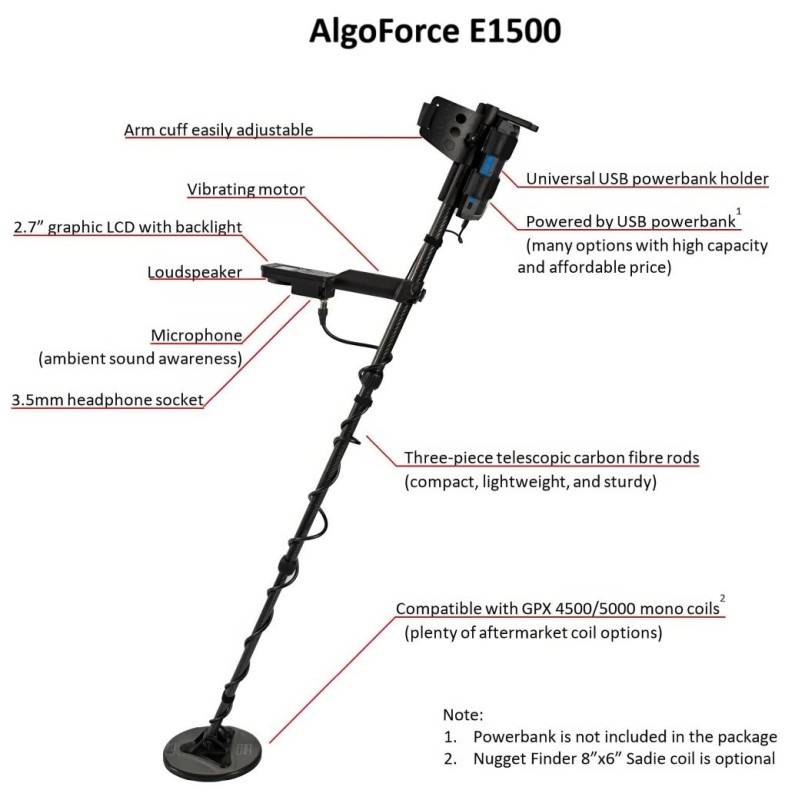
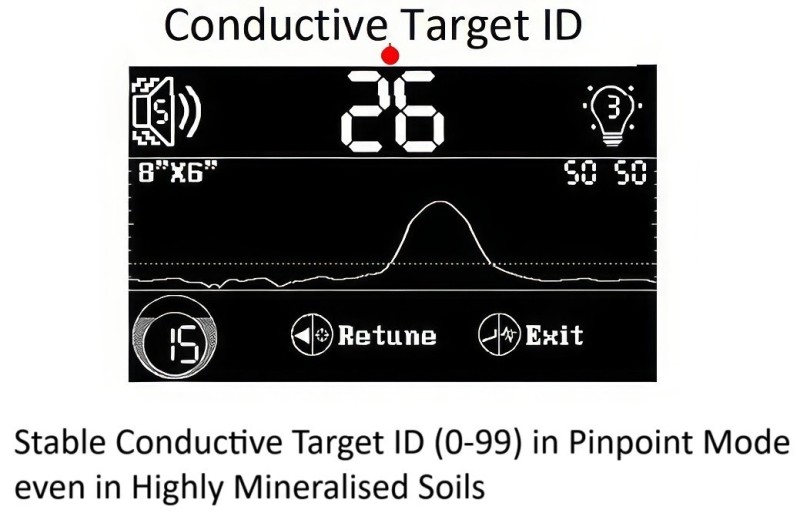


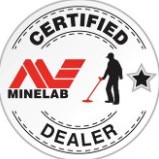







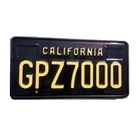








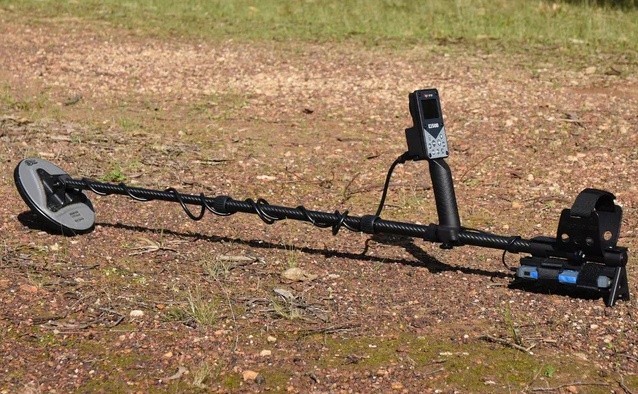
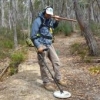
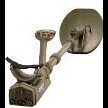

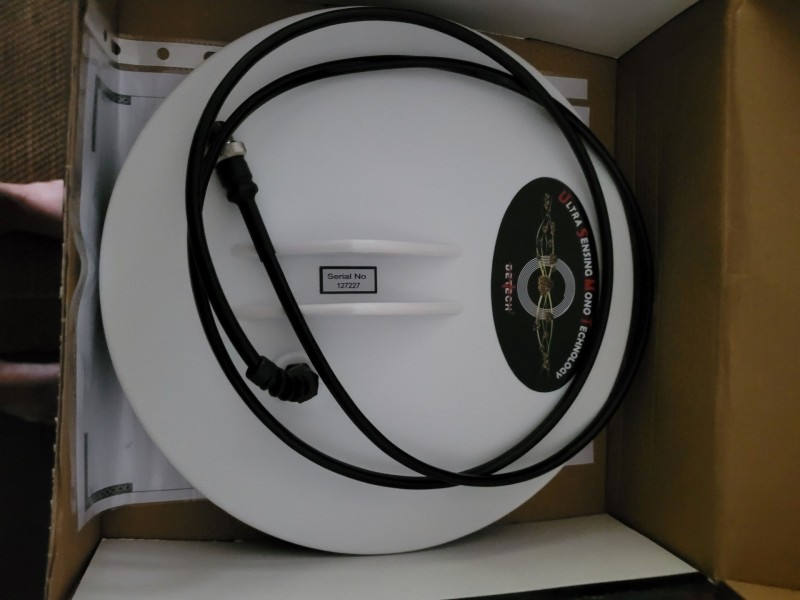

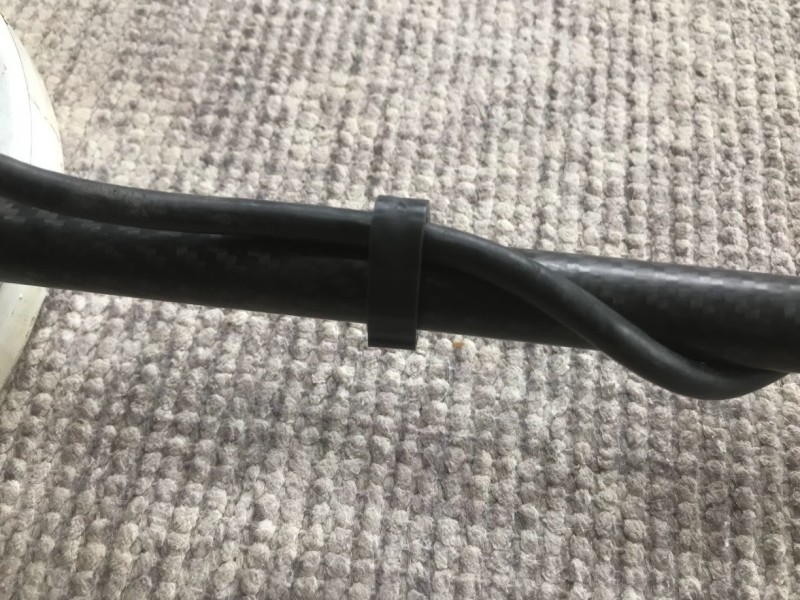


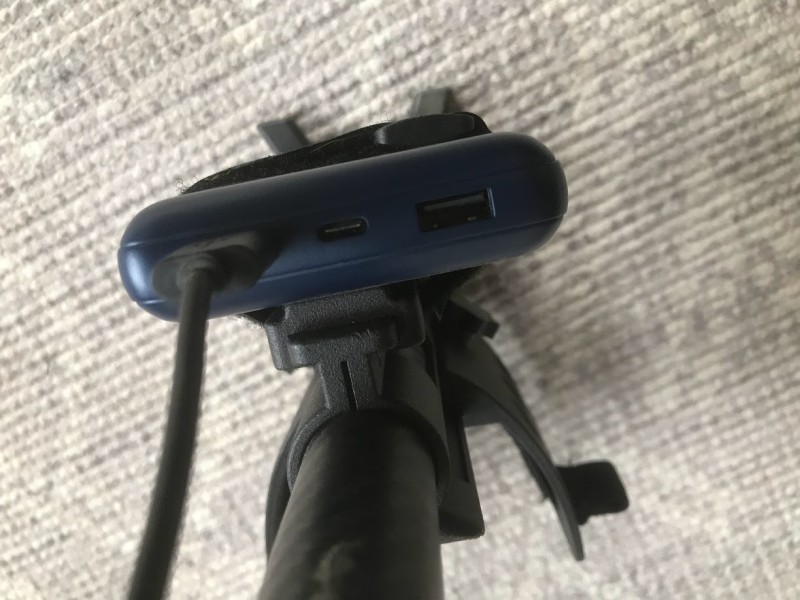

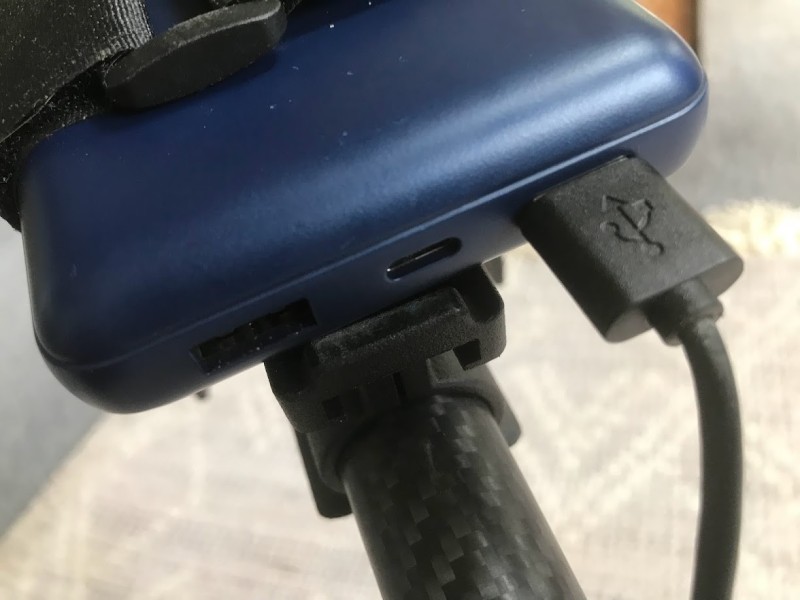

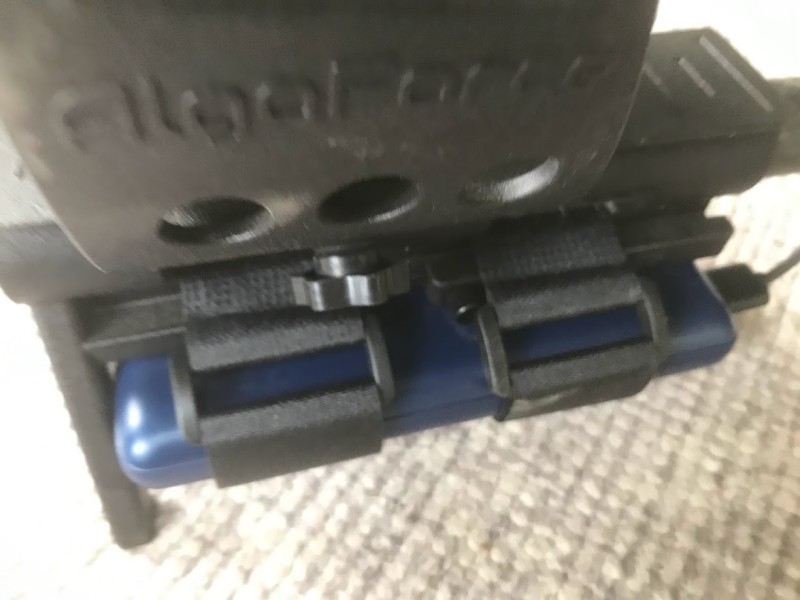
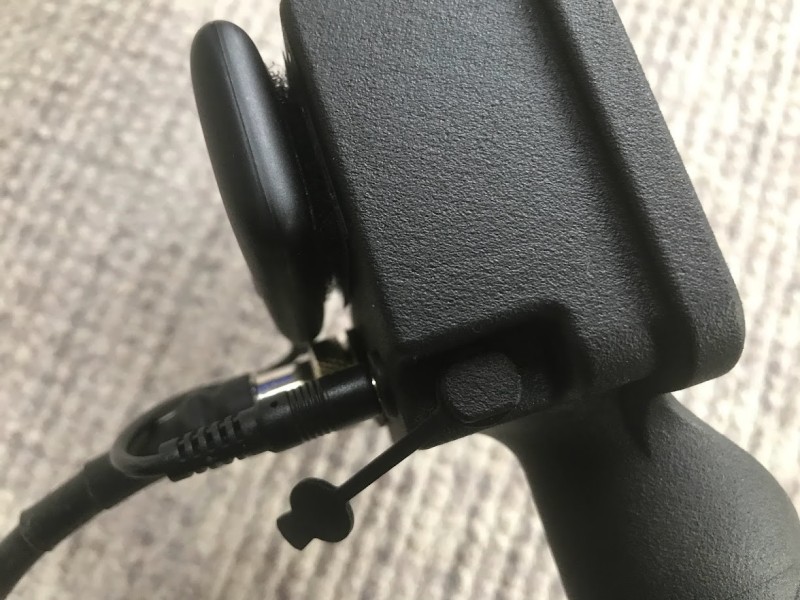
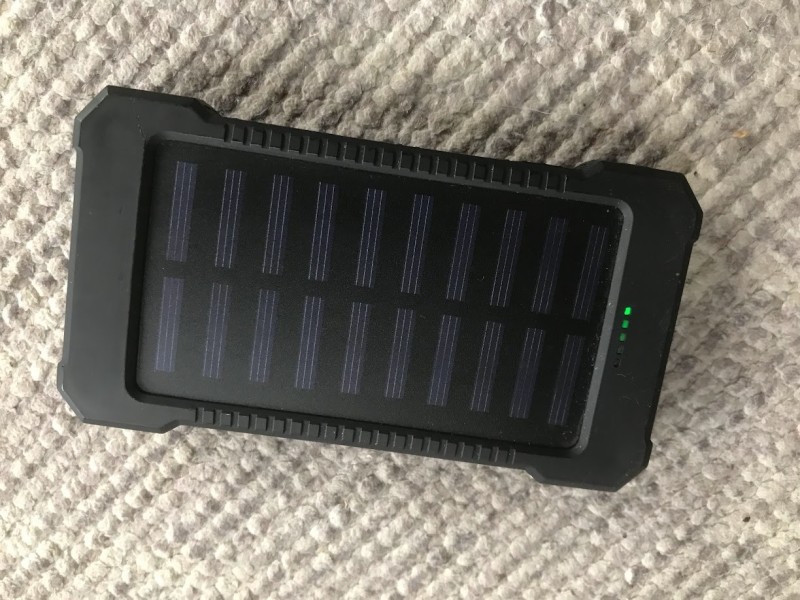
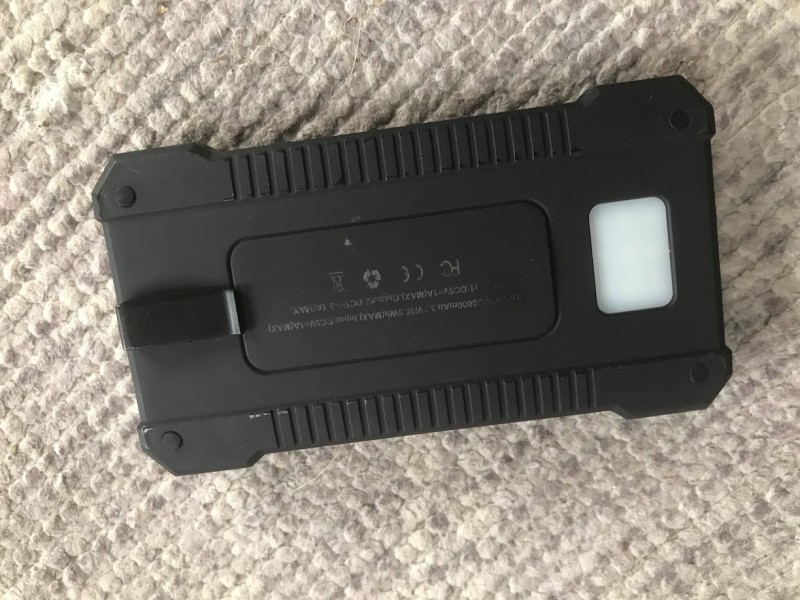
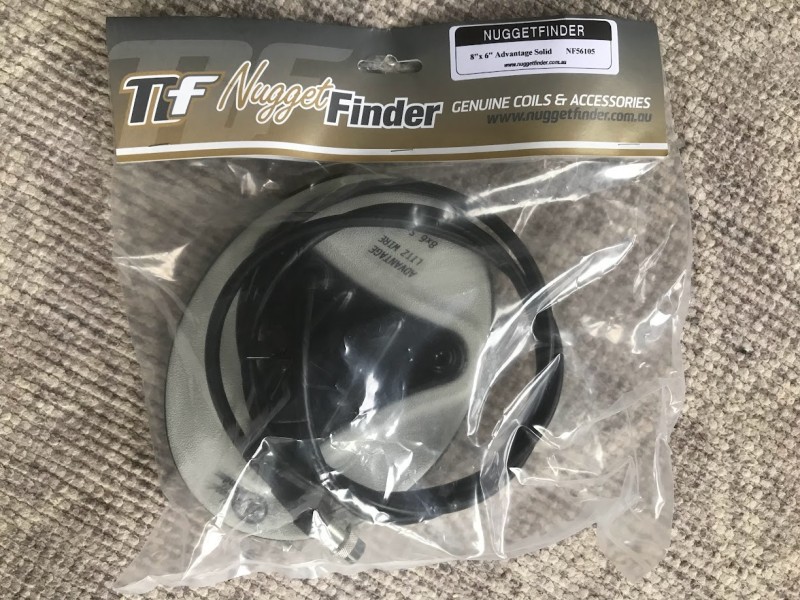
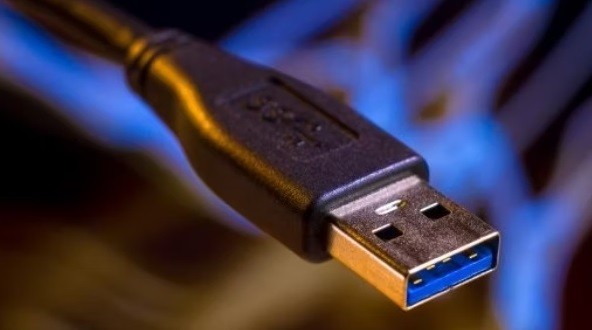

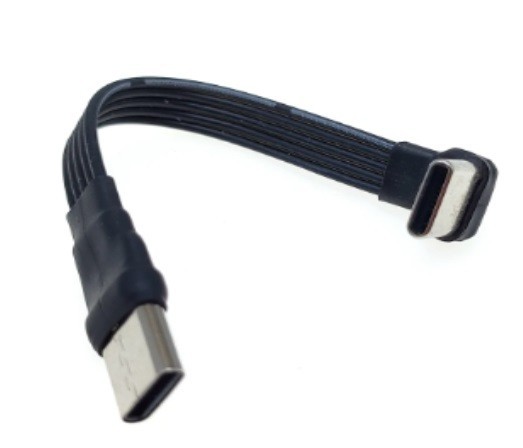
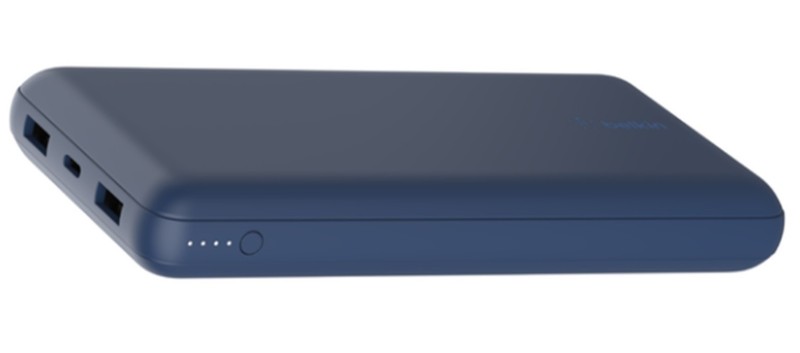
.thumb.png.2305428e7f1cb9d9312fd9462c9f483e.png)

